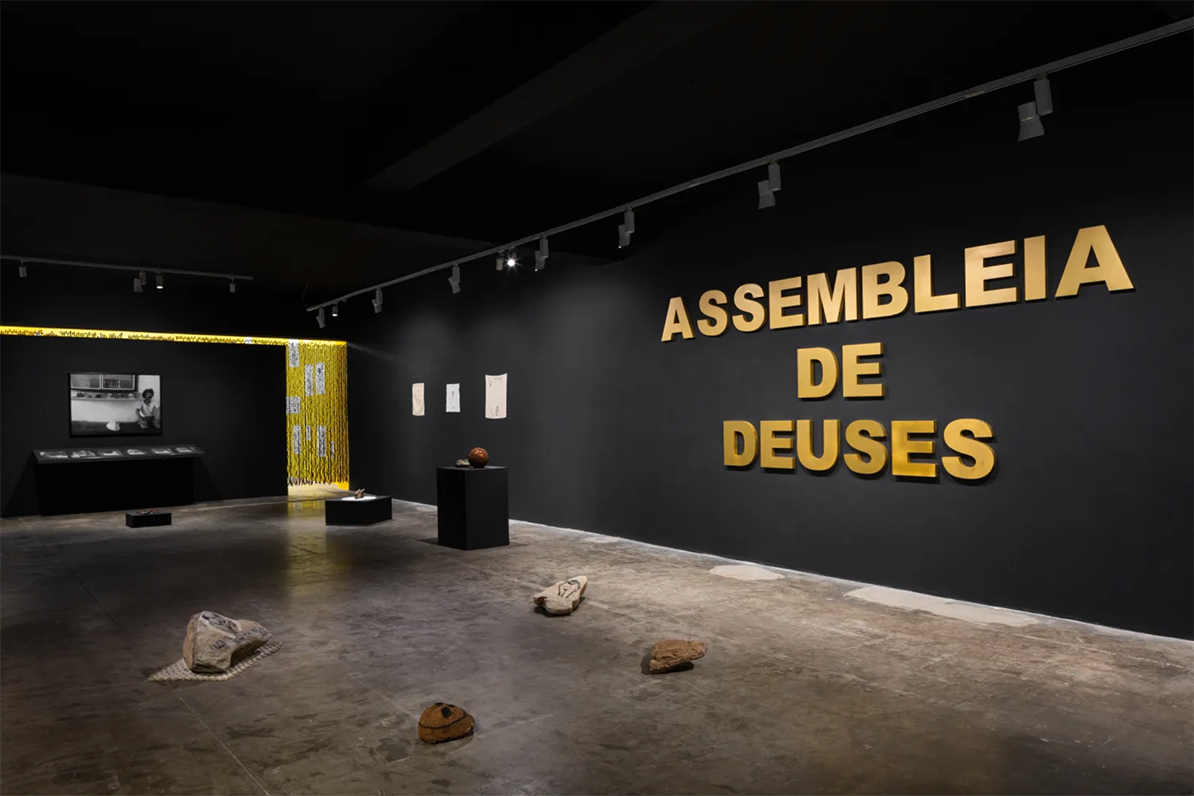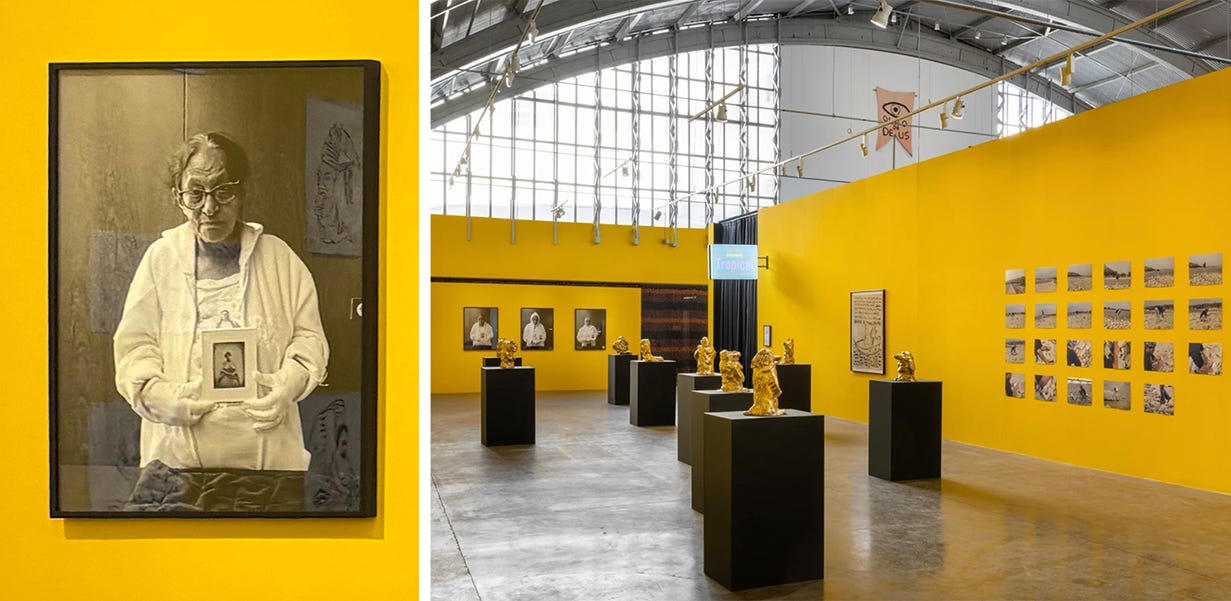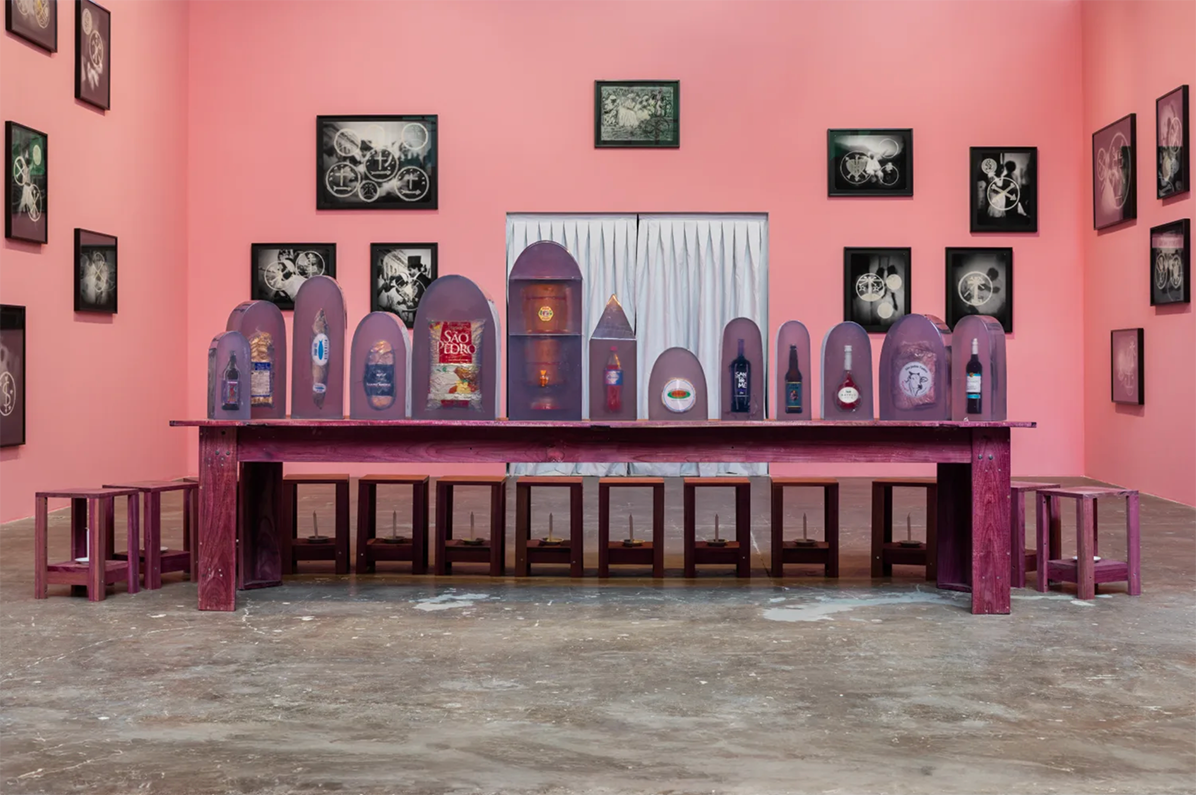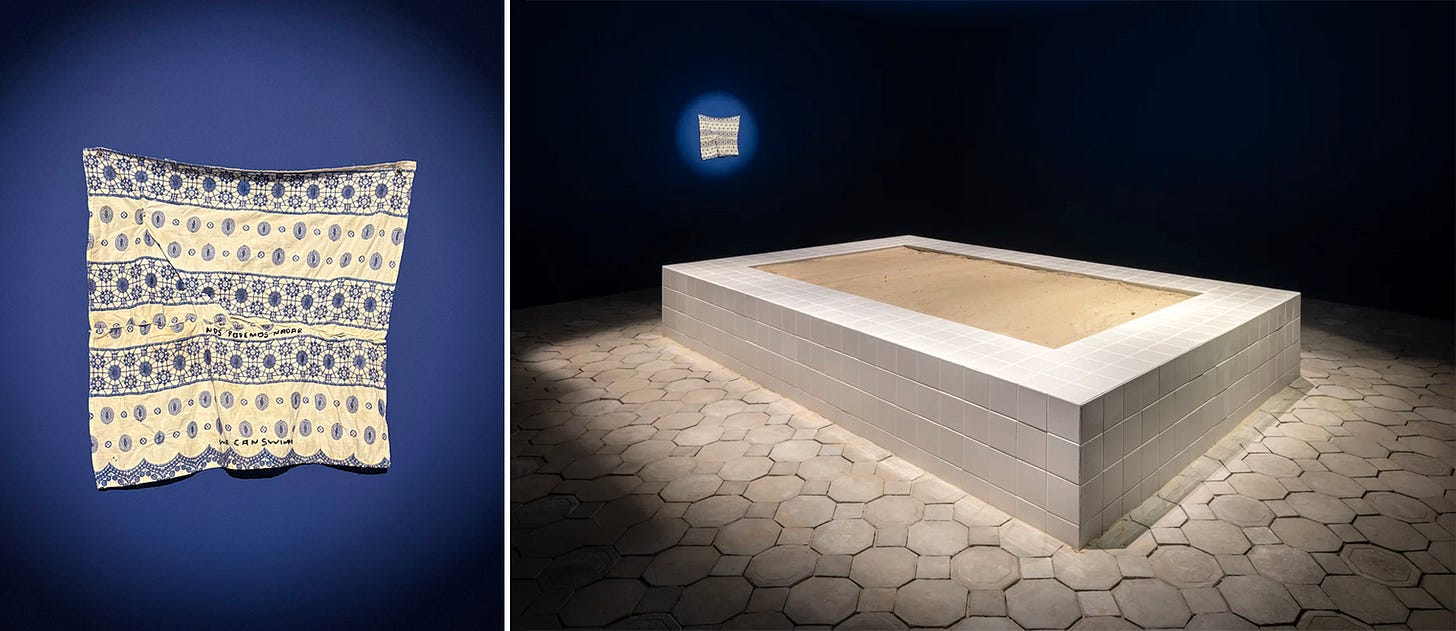We Can Swim
Walking through Nazarethana, artist Paulo Nazareth offers a sacred cartography shaped by his mother’s voice, ancestral memory, and color.
I hadn’t set foot in São Paulo in a very long time. Then, in early September, I returned with my mother by my side. She flew in from Brasília to join me at the 36th Art Biennial. As a painter, four days of art was an easy yes. I saw it as something else: an opening. I’m one of five daughters, and time alone with her has always felt both tender and borrowed.
That morning, our first stop was Mendes Wood DM, in the Barra Funda neighborhood. We arrived early and waited in the car, since the usually horrendous traffic hadn’t caught us. The day before, we had visited the Biennial; this morning was for galleries. It was a glorious spring day: mild, sunlit, full of promise. We were giddy, talking over each other, eager to begin. The day felt wide open.
Inside, the gallery was dimly lit, the walls painted black. A soft neon phrase glowed across one wall: Assembleia de Deuses, (Assembly of Gods). It was the first gesture in Nazarethana, Paulo Nazareth’s cartography of memory, ancestry, and presence. Organized in Cantos, like a poem unfolding in fragments, the exhibition didn’t follow a straight line. It moved through spirit, pigment, and rhythm. Each room opened into another register. The colors weren’t simply visual; they held meaning.

The black room evoked Calunga, the Afro-Brazilian spirit who binds sea to cemetery. Here, Nazareth began with mourning. His grandmother, Nazareth Cassiano de Jesus, had labored on farms laid over Borun Indigenous lands. Later, she was institutionalized at Colônia de Barbacena, where thousands of poor, Black, and Indigenous Brazilians disappeared. She was never seen again. His mother, Ana Gonçalves da Silva, remembered her only in fragments. Nazarethana doesn’t reconstruct their stories. It sanctifies them.
The title Nazarethana fuses two names: Nazareth, his grandmother, and Ana, his mother. More than a tribute, it is a declaration of origin. The exhibition grows from their lives, disrupted, erased, remembered, and carries their names forward, room by room, like a refrain. Nazareth carries his grandmother’s name as a principle, a practice, and a path. His work—walking, witnessing, collecting—becomes a ritual of relation. He moves through the world as both participant and documentarian. His photographs, found objects, and ephemeral installations carry overlooked stories: migrants, the undocumented, the disappeared. “I am my people,” he has said. “There is the person, and then there is the collective. Everything is both, together and separated.” The “I” is never singular. It is family, and also strangers met on the road, uncounted and unrecorded.

The next room was yellow, bright and enveloping. It honored Oxum, orixá of fertility and love, protector of women and rivers. Nazareth’s works also referenced water deities from Nordic, African, and Brazilian traditions, figures often pushed to history’s edges.
Along one wall hung three photographs of his mother. In each, she holds a framed portrait: a photograph within a photograph. She wears white gloves, her expression both formal and tender. The images she holds were found in an exhibition in Paris, archival photographs of people once labeled “exotic” and taken to Europe to be displayed. Upon seeing them, she recognized something. Though her memories of her own mother were faint, she was certain: she had looked like the Indigenous woman in the picture.

Then came MAMA (Museum of the Mother): part monument, part archive, part invitation. This iteration held space for reflection. Visitors were invited to leave drawings or notes: portraits of their mothers, fragments of memory, gestures of care. Together, these became a collective act of visibility for mothers and the often-unseen labor of nurturing.
In the white room, everything felt distilled. The floor, walls, and ceiling, white on white, were dedicated to Eleguá, or Exu, lord of thresholds and beginnings. Red and black beads scattered across the floor during a performance by Nazareth formed the installation as both offering and invocation. This Canto became a crossroads.

The rose-colored room belonged to Ewá, divinity of vision and intuition, associated with Saint Lucy in Christian tradition. Her presence was quiet, charged. Along the walls, photographs alternated with pontos riscados, spiritual diagrams in pemba chalk, traced from the archives of the Centro Espírita Caboclo Pena Branca in the Namastê Quilombola Community. At the center, a table recalled a Last Supper, set with resin replicas of saint-named goods: Guaraná Jesus, São Tiago biscuits, São João filters. Sacred and commercial coexisted—not as critique, but as condition.

A sand-filled pool stretched across the floor in the final room. Blue walls evoked sea and sky. The ground mirrored Dakar’s cobblestones, marked with royal emblems and a baobab tree whose roots hold memory. On the wall: Nós podemos nadar (We can swim). Nazareth doesn’t swim. Water had meant danger. Here, water wasn’t danger, it was beginning. The pool hovered between path and passage. A place of return.
Nazarethana offers no final statement, no text to tell you what to take. Instead, it leaves you in motion. Between rooms, between histories, between worlds. It lingers not through spectacle, but because it stirs something inside you. We had more places to see, but something had shifted. What Nazarethana opened didn’t close when we left.



I love getting a glimpse into this journey! And wow! The Museum of Mother ✨✨✨
Thank you Carmen for sharing your journey with your mom and your time reflecting on the history of Brazil; beautifully shared with beautiful prose. Hugs always Cathleen